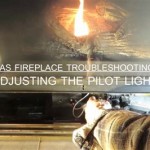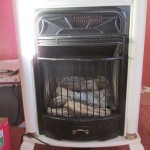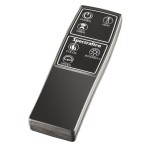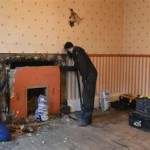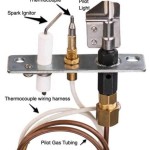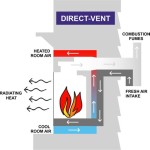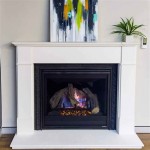Gas Inserts For Fireplace Near Me: A Comprehensive Guide
The search term "Gas Inserts For Fireplace Near Me" indicates a homeowner's interest in converting an existing masonry or prefabricated fireplace into a more efficient and convenient heating appliance. This article provides a detailed overview of gas fireplace inserts, covering their functionality, benefits, selection considerations, installation process, and ongoing maintenance, offering informational guidance for homeowners exploring this heating option.
Gas fireplace inserts are self-contained units designed to fit directly into the opening of an existing fireplace. They operate by burning natural gas or propane to generate heat, which is then distributed into the room, often with the assistance of a built-in blower. Unlike traditional wood-burning fireplaces, gas inserts offer enhanced control over heat output, improved energy efficiency, and reduced emissions. This makes them a desirable alternative for homeowners seeking a more practical and environmentally responsible heating solution.
The geographical element of the search term highlights the importance of finding local suppliers and installers for gas fireplace inserts. Location affects service availability, local building codes, and potentially, pricing. Working with nearby professionals simplifies the installation process, ensures compliance with regulations, and provides ongoing support and maintenance services.
Understanding the Benefits of Gas Fireplace Inserts
Gas fireplace inserts offer numerous advantages over traditional wood-burning fireplaces, making them a popular choice for homeowners seeking to upgrade their existing heating systems. These benefits include increased energy efficiency, improved air quality, enhanced convenience, and aesthetic versatility.
Energy Efficiency: Traditional open fireplaces are notoriously inefficient, with a significant portion of the heat escaping through the chimney. Gas fireplace inserts, on the other hand, are designed for optimal heat retention and distribution. They typically have a sealed combustion chamber and a venting system that directs exhaust gases safely outdoors. Many models also incorporate features like programmable thermostats and remote controls, allowing users to precisely regulate heat output and conserve energy. The result is a substantial reduction in energy consumption compared to a traditional fireplace, leading to lower heating bills and a smaller carbon footprint.
Improved Air Quality: Wood-burning fireplaces produce smoke, soot, and other particulate matter that can negatively impact indoor and outdoor air quality. Gas fireplace inserts burn cleaner, producing significantly fewer emissions. This not only reduces the risk of respiratory problems and other health issues but also contributes to a healthier environment overall. The sealed combustion chamber prevents smoke and fumes from entering the living space, further enhancing air quality.
Enhanced Convenience: Gas fireplace inserts offer unparalleled convenience compared to wood-burning fireplaces. They eliminate the need for storing, hauling, and chopping wood, as well as the mess associated with ash and soot. With the simple push of a button or the flick of a switch, a gas fireplace insert can be ignited and adjusted to the desired heat setting. Many models also feature automatic ignition systems and programmable timers, allowing for hands-free operation. The convenience of gas inserts makes them an ideal heating solution for busy homeowners who want to enjoy the ambiance of a fire without the hassle of traditional wood-burning.
Aesthetic Versatility: Gas fireplace inserts are available in a wide range of styles, finishes, and sizes to complement any décor. From traditional log sets to contemporary glass media, there are options to suit every taste. The realistic flame patterns and glowing embers of modern gas inserts create a warm and inviting atmosphere. In addition to their aesthetic appeal, gas fireplace inserts can also increase the value of a home by adding a stylish and functional heating feature.
Key Considerations When Choosing a Gas Fireplace Insert
Selecting the right gas fireplace insert requires careful consideration of several factors, including the size of the fireplace opening, the heating needs of the space, fuel type preference, and venting requirements. Evaluating these aspects ensures that the chosen insert provides optimal performance and satisfaction.
Fireplace Opening Size: The first step in selecting a gas fireplace insert is to accurately measure the existing fireplace opening. The insert must fit properly within the opening, with adequate clearance for ventilation and safety. Most manufacturers provide detailed specifications and installation guidelines to ensure a proper fit. It is crucial to choose an insert that is compatible with the dimensions of the fireplace to avoid installation issues and ensure safe operation. A professional installer can assist with measurements and provide guidance on selecting the appropriate size insert.
Heating Needs: The heating capacity of a gas fireplace insert is measured in British Thermal Units (BTUs). The appropriate BTU rating depends on the size of the room to be heated and the climate in which the home is located. A larger room or a colder climate will require an insert with a higher BTU rating. It is important to consider the insulation of the home and the efficiency of the existing heating system when determining the heating needs. Consulting with a qualified HVAC professional or fireplace specialist can help determine the optimal BTU rating for a specific application. Over-sizing an insert can lead to discomfort and wasted energy, while under-sizing an insert may not provide adequate heating.
Fuel Type: Gas fireplace inserts are designed to operate on either natural gas or propane. Natural gas is typically less expensive than propane, but it is only available in areas with access to a natural gas pipeline. Propane is a more versatile option, as it can be delivered in tanks to homes without natural gas service. The choice of fuel type will depend on the availability of natural gas, the cost of propane, and the homeowner's preferences. It is important to ensure that the chosen insert is properly configured for the selected fuel type. Converting an insert from one fuel type to another may require specialized components and professional assistance.
Venting Requirements: Gas fireplace inserts require a venting system to safely exhaust combustion gases outdoors. There are two main types of venting systems: direct vent and B-vent. Direct vent systems draw air from outside the home for combustion and vent exhaust gases directly outdoors through a sealed pipe. B-vent systems use room air for combustion and vent exhaust gases through an existing chimney. The choice of venting system will depend on the design of the fireplace and the local building codes. Direct vent systems are generally more efficient and safer than B-vent systems, but they may require more extensive installation work. A qualified installer can assess the venting requirements and recommend the appropriate type of system for a specific application.
Understanding Installation and Maintenance
Proper installation and regular maintenance are essential for ensuring the safe and efficient operation of a gas fireplace insert. Installation should be performed by a qualified professional, and ongoing maintenance should be conducted according to the manufacturer's recommendations.
Professional Installation: Installing a gas fireplace insert involves connecting the unit to a gas line, venting system, and electrical supply. These tasks require specialized knowledge and skills, and should only be performed by a licensed and certified professional. Improper installation can lead to gas leaks, carbon monoxide poisoning, and other safety hazards. A professional installer will ensure that the insert is properly connected, vented, and tested for safe operation. They will also ensure that the installation complies with all applicable building codes and regulations. Hiring a qualified installer is a worthwhile investment that protects the homeowner's safety and ensures the long-term performance of the gas fireplace insert.
Regular Maintenance: Regular maintenance is crucial for keeping a gas fireplace insert in optimal condition. Maintenance tasks include cleaning the burner assembly, inspecting the venting system, and checking the gas connections. The frequency of maintenance will depend on the usage of the insert and the manufacturer's recommendations. It is important to follow the manufacturer's instructions carefully when performing maintenance tasks. Some tasks, such as cleaning the burner assembly, may require specialized tools and knowledge. If the homeowner is not comfortable performing these tasks, they should hire a qualified technician to do so. Regular maintenance will help prevent problems, extend the life of the insert, and ensure its safe and efficient operation.
Safety Precautions: Gas fireplace inserts, like all gas appliances, require adherence to specific safety precautions. Homeowners should install and maintain carbon monoxide detectors in their homes to provide early warning of potential leaks. It is also important to keep flammable materials away from the insert and to never obstruct the venting system. If a gas smell is detected, the gas supply should be shut off immediately, and a qualified technician should be called to investigate. Following these safety precautions will help prevent accidents and ensure the safe operation of the gas fireplace insert.
Finding a reputable local installer is crucial for a successful gas fireplace insert experience. Homeowners should check online reviews, obtain multiple quotes, and verify the installer's credentials and insurance coverage before hiring them. A reliable installer will provide professional service, answer questions thoroughly, and ensure that the installation is completed safely and according to code. The phrase "Gas Inserts For Fireplace Near Me" underscores the importance of finding a local expert who can provide ongoing support and maintenance services.

Duluth Forge 27 In W 26000 Btu Black Vent Free Dual Burner Gas Fireplace Insert And Remote Fdf300r At Com

Gas Fireplace Inserts The Place Fairfield

Empire Direct Vent Gas Fireplace Insert Loft

Gas Insert Series

Why Buy A Gas Burning Fireplace Insert Sierra Hearth And Home

430 Mod Fyre By Fireplace Xtrordinair Higgins Energy Alternatives

Gas Fireplace Inserts The Torch Guys

How To Buy A Gas Fireplace Insert Buyer S Guide From Regency

Gas Fireplace Inserts Near Me In St Louis Forshaw

Belmont Q1 Gas Insert Or Fireplace
Related Posts

